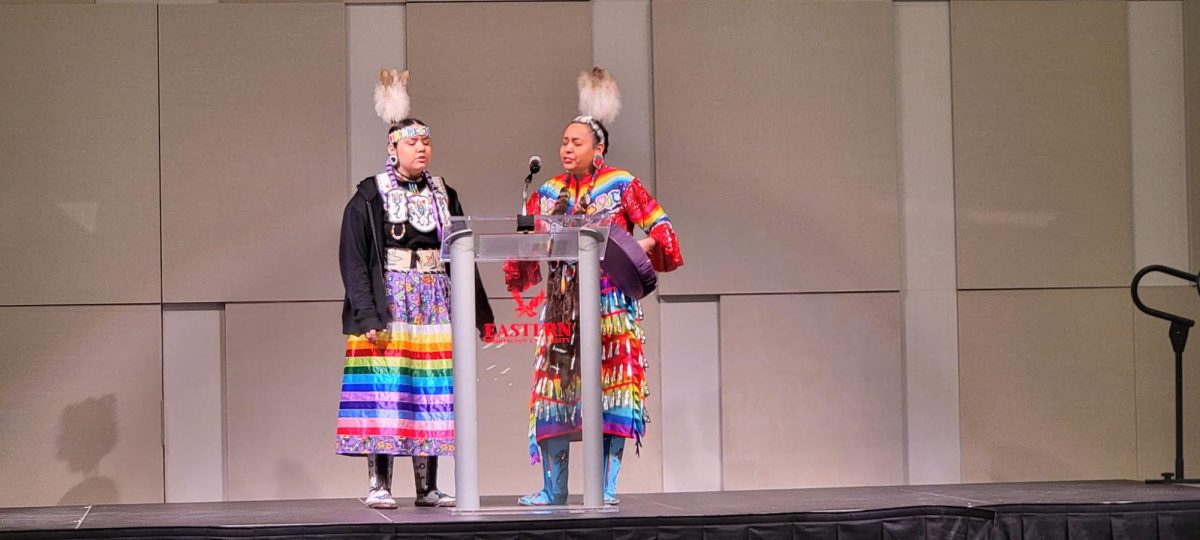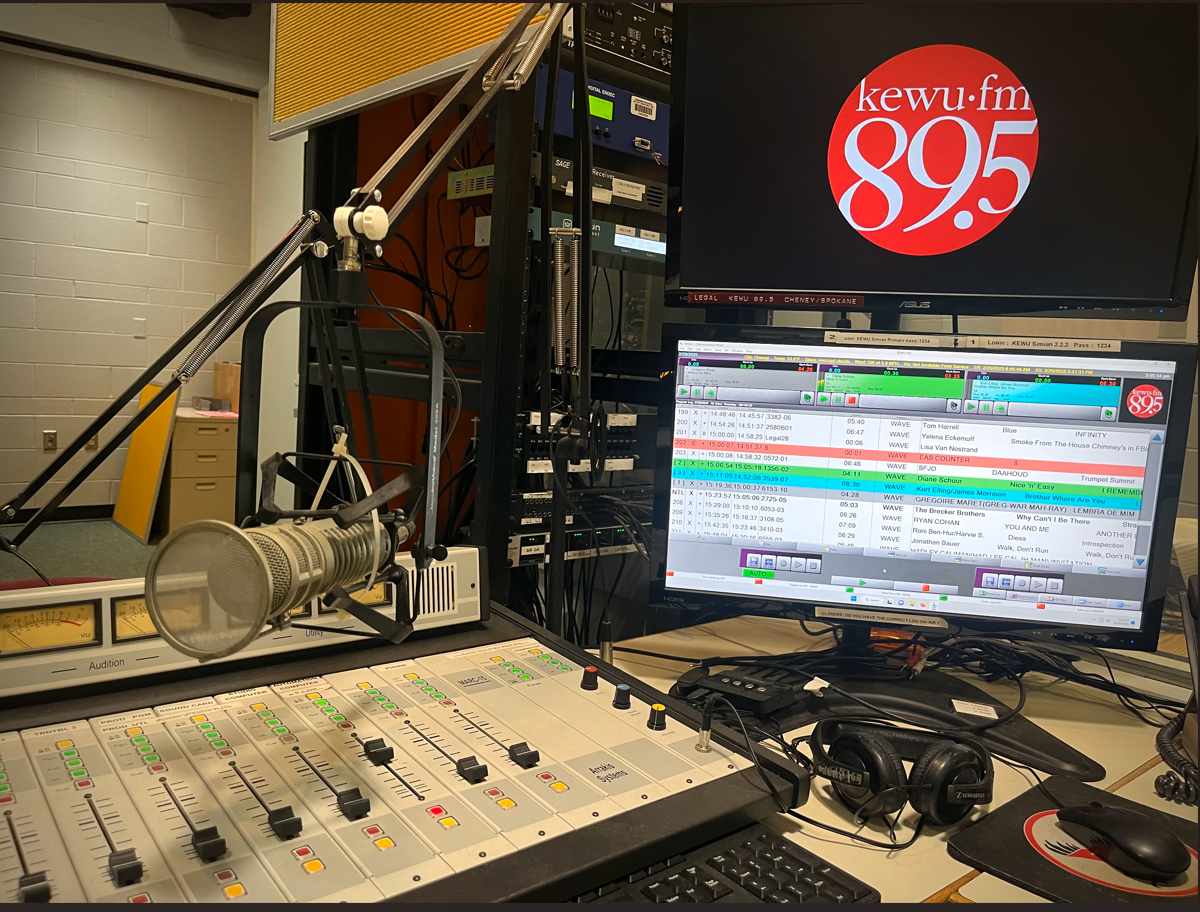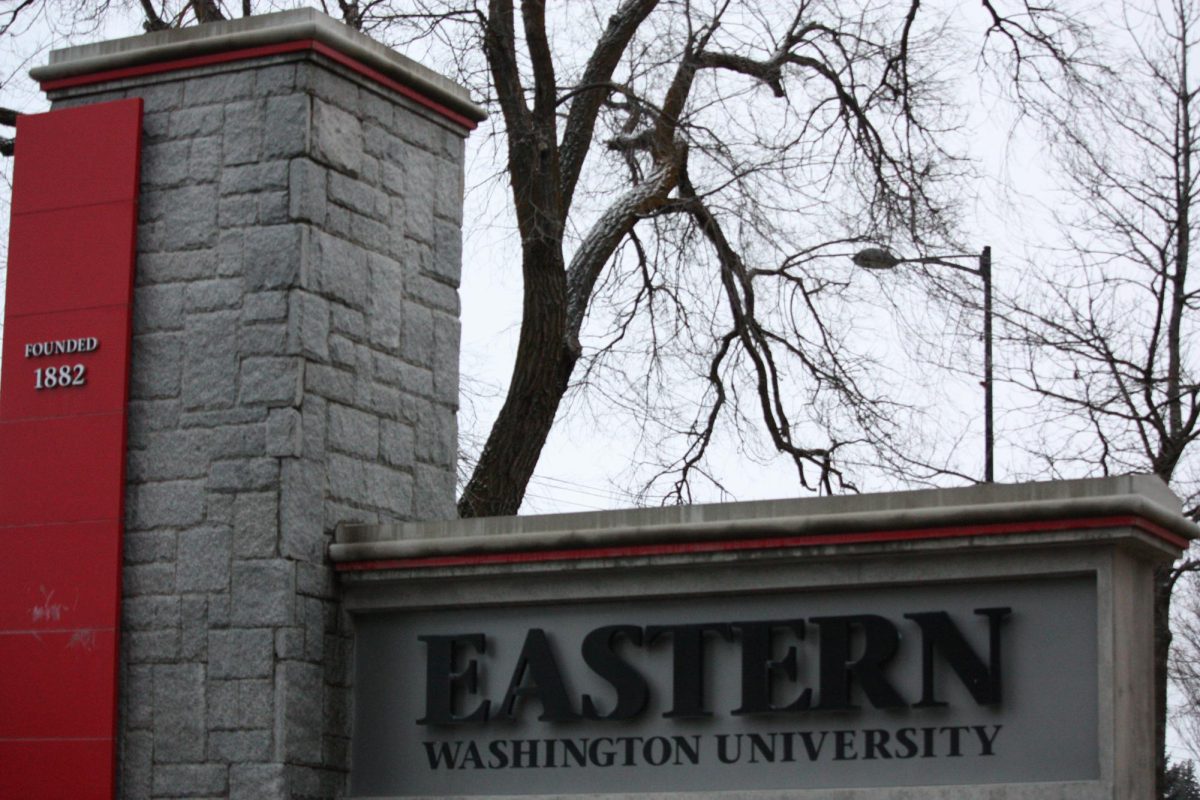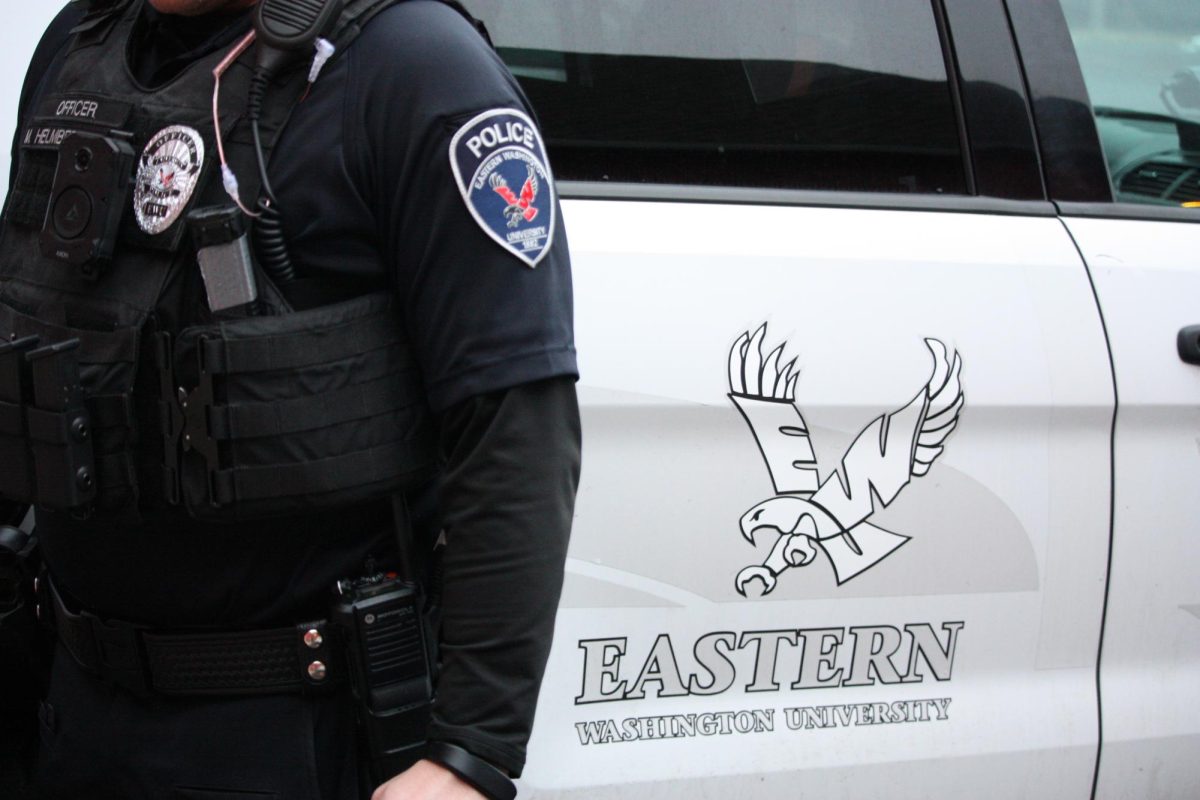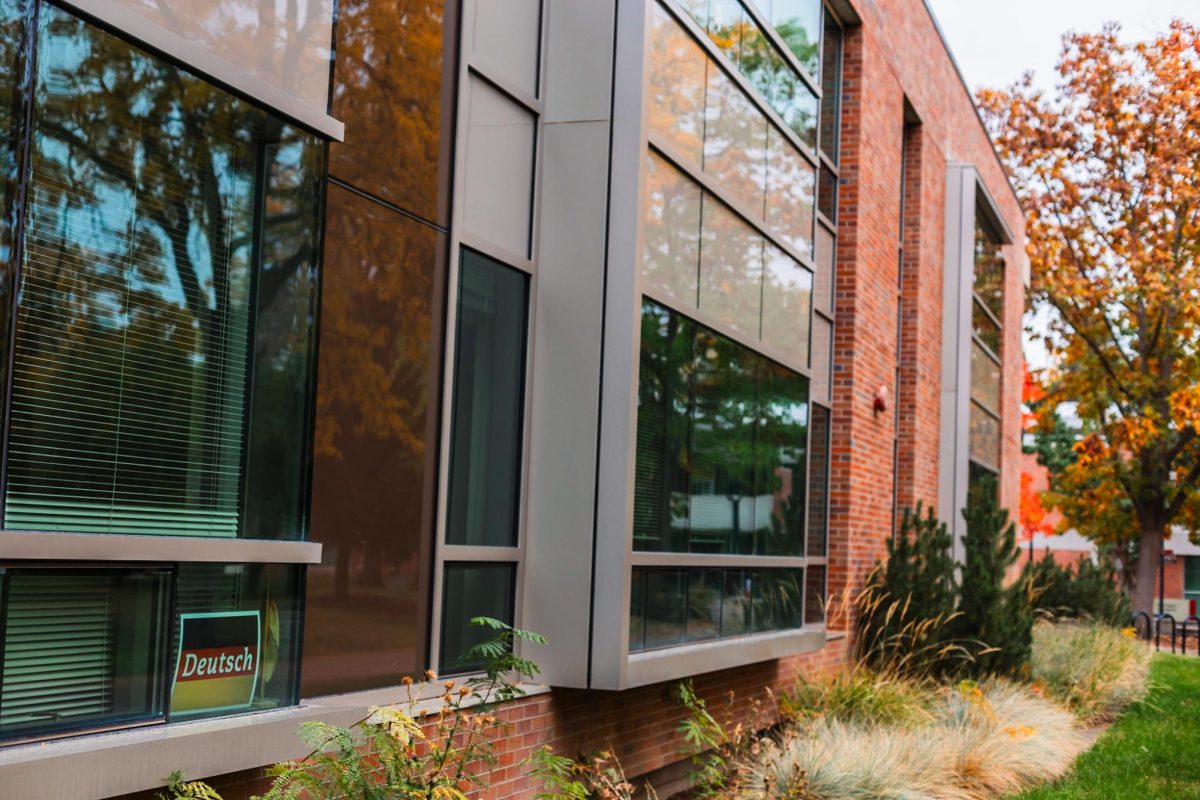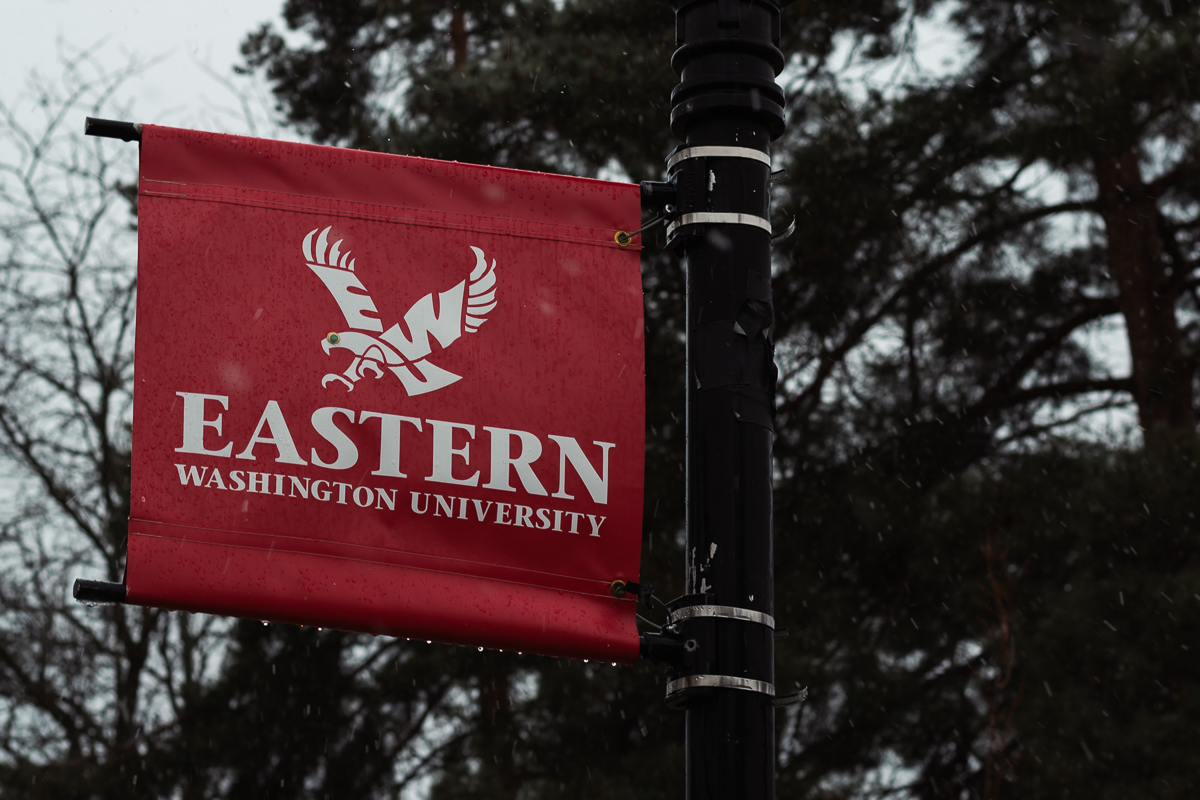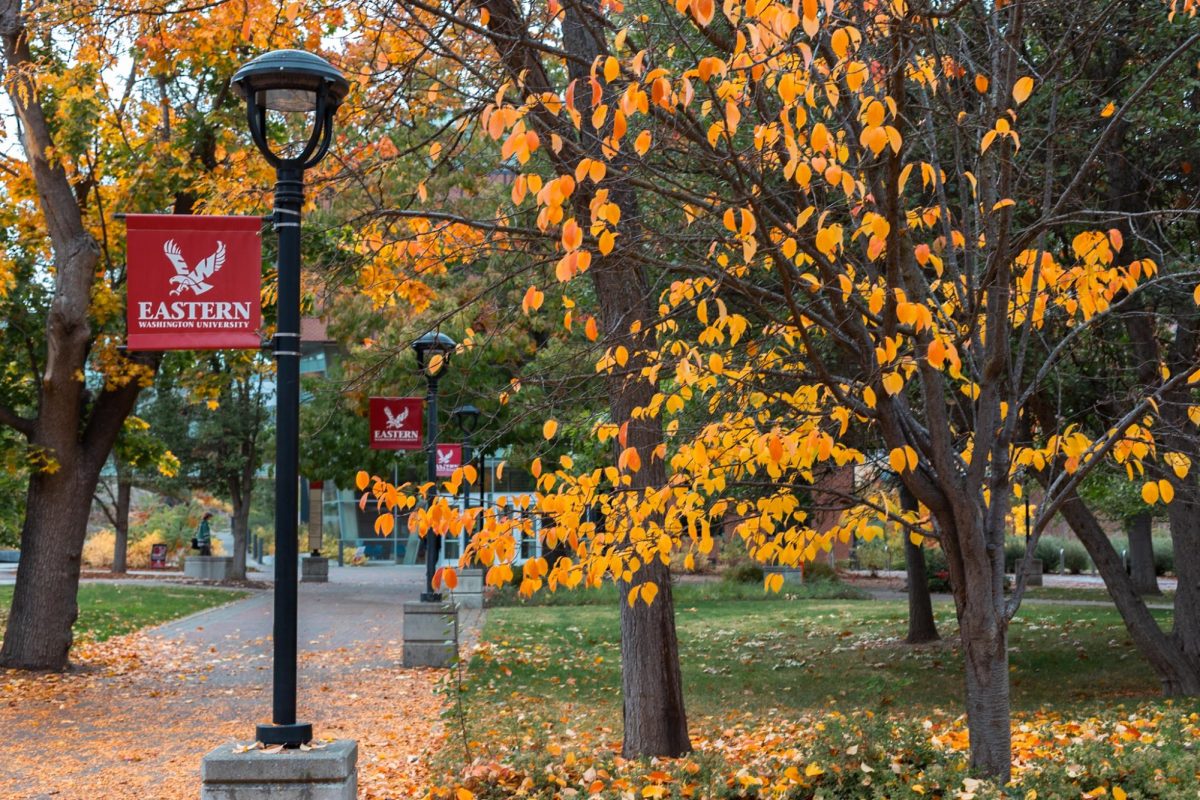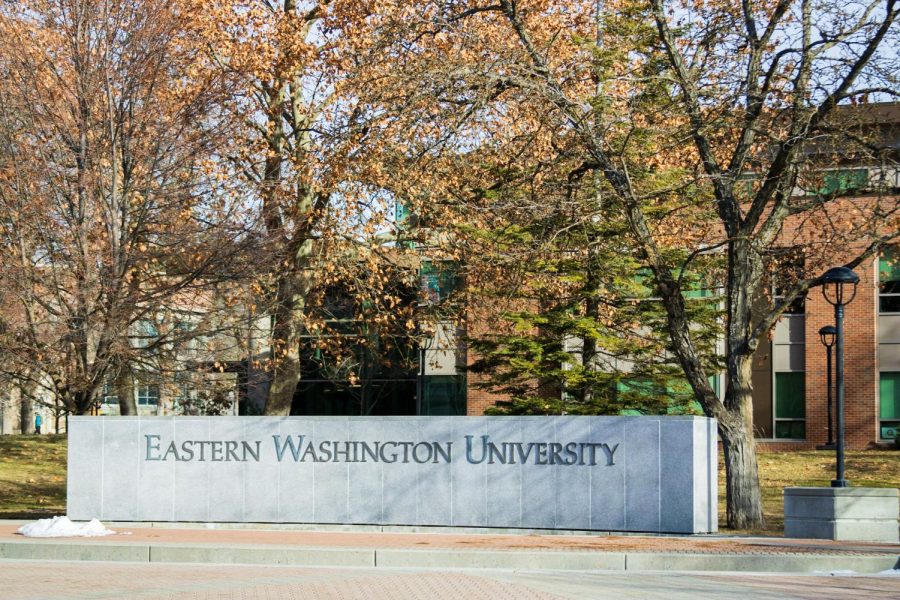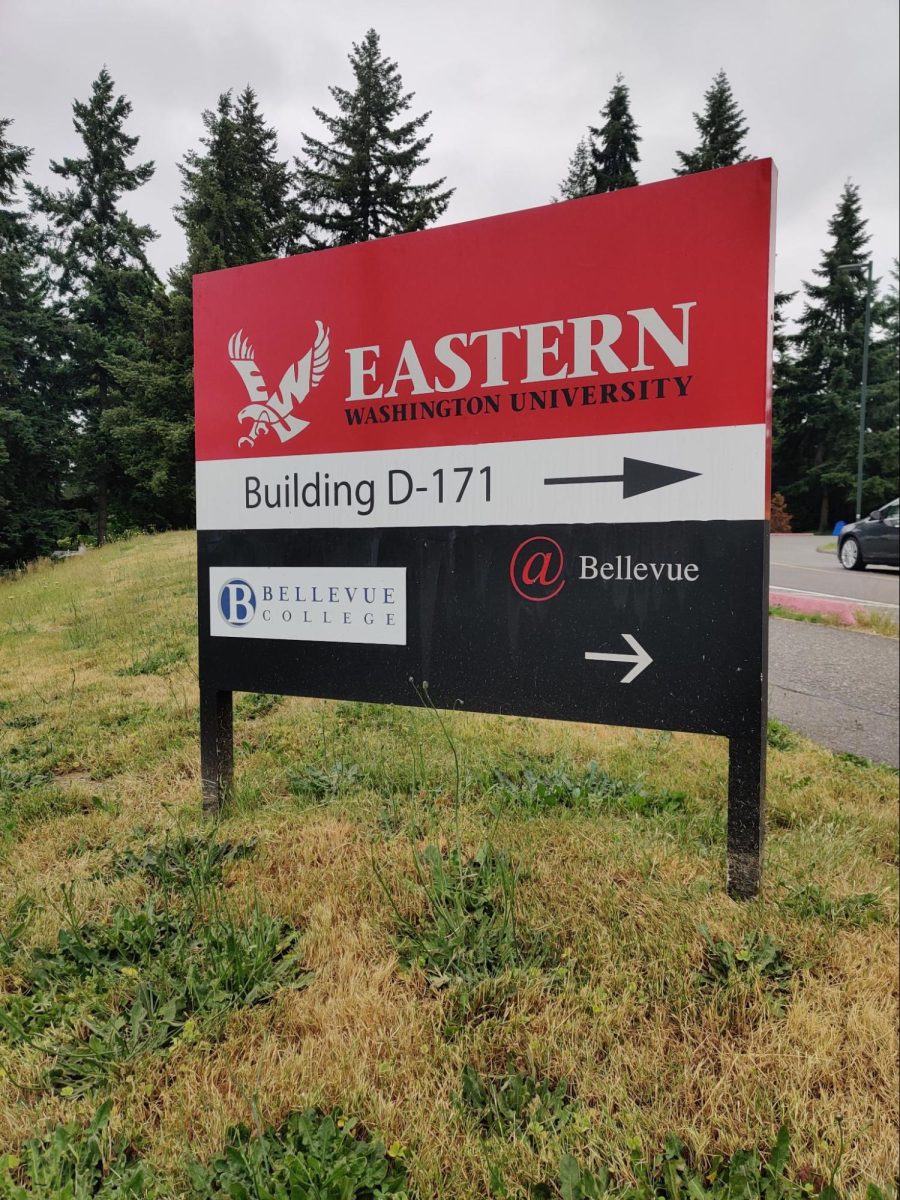Eastern Washington University’s Native American Student Association hosted an educational event on campus Nov. 14 in honor of Native American Heritage Month.
The event ran from 11 a.m. to 5 p.m. in Eastern Washington University’s PUB NCR, and was composed of a frybread fundraiser, an informational presentation, a cultural crafts session, and a dancing exhibition.
Evanlene Melting Tallow, program coordinator and recruiter for EWU’s American Indians Studies Program, said the entire event was a huge success. “The fundraiser turned out really good,” Melting Tallow said. “There was a lot of story-telling with every part of the event.”
The presentation portion of the event was hosted by Margo Hill, an associate professor of urban and regional planning at EWU, and titled ‘Generations of Cultural Assault on American Indians/Alaska Natives from Boarding Schools to the Osage.”
The presentation began with Evanlene Melting Tallow, who thanked the attendees for coming and mentioned some upcoming events the Native American Student Association had planned. “On November 30th we will be making Christmas ornaments,” Melting Tallow said. “We’d love for you to come join us.”
Melting Tallow then introduced War Bear, the Native American Student Association club President. War Bear spoke a little about why this was the only event planned for Native American Heritage Month. “We only did one event this year because this month is heavy for many,” War Bear said. “There’s a lot going on, and I stand with two-spirit people, trans people, non-binary people.”
War Bear introduced the primary presenter, Margo Hill, who began the presentation by talking about basic American rights. “The right to free speech, the right to peaceful assembly, freedom of religion: these are fundamental American liberties that are freely available to everybody, but Native Americans,” Hill said.
She proceeded to then talk about the Lakota Ghost Dance and the subsequent massacre at Wounded Knee. “It was a prayer for help from our ancestors,” Hill said. “Bison were being hunted to extinction, Native Americans being hunted too by European settlers. Tribal people were literally starving.”
The settlers responded to these prayers with violence. “The Seventh Cavalry massacred more than 200 men, women, and children of Big Foot’s band of Sioux,” Hill said.
Hill mentioned many other instances of Native American rights being stripped from them. “Indian reservations were divided by religions. People, especially children, were sent into mainstream denominations to soften us up,” Hill said.
In addition to the historic examples Hill provided, she also provided examples of how there are still injustices aimed at Native Americans. “Climate change disproportionately affects native people,” she said. She then told an anecdote about when Hill had visited some Alaska Natives that were negatively being affected by rising water levels related to climate change.
Hill also mentioned the Termination Era in the 1950’s and how the United States adopted policies that terminated financial obligations to Native American tribes. “We could no longer receive assistance, but we still have to abide by their rules,” Hill said.
Later in the day, EWU’s NASA hosted a free cultural craft event to teach attendees a little bit more about Native American culture. “The department of Diversity and Equity helped, and I’m thankful for the work study students that helped out, “ Evanlene Melting Tallow said. “There were lots of students, but everyone was able to give instructions and the cultural story.”
The crafts that were offered were dreamcatchers, parfleche, gourd necklaces, and woven bags, and each was accompanied by the story behind the item being created.
“The dreamcatcher has a really interesting story,” Evanlene Melting Tallow said. “The two-legged asked the creator to help with bad dreams. So Spider was asked to spin the web and Eagle was asked for a feather.”
The other crafts also gave insight to different aspects of Native American culture as well. “Gourds were used for storing food or utensils and water. In almost every culture gourds are important,” Melting Tallow said. “The parfleche is made of rawhide and used to store animal fat, and the woven pouch was used to hold herbs or sweetgrass or sage.”
The dancing portion of the event was equally as educational as it was entertaining. “The dancing club was led by Venessa Pete, the Student Powwow Committee Chair,” Melting Tallow said. “They talked a bit about how the jingle dress originated.”
“A girl got sick and an elder from that tribe saw a vision of a dress on this girl. He kept seeing shiny things on her so he described the dress to the women of the tribe,” Venessa Pete said as she described the story behind the jingle dress. “They built the dress and put it on the girl, and they had a jumpsing for her. The first verse she was barely moving, second verse she starts dancing a little bit more, third verse she’s dancing.”
On Nov. 30, EWU’s Native American Student Association will be hosting a gourd ornament class with guest instructor, Sarai Mays. The class is $20 for three ornaments, and will be hosted in the EWU Art Building, room 108.
The class is held from 3 p.m. until 7 p.m., but participants can expect the instruction to be much shorter than this. “It’s going to be a drop in, so people can come in whenever they’re able,” Evanlene Melting Tallow said.
For more information or to RSVP for the class, Evanlene Melting Tallow can be contacted at emeltingtallow@ewu.edu.




